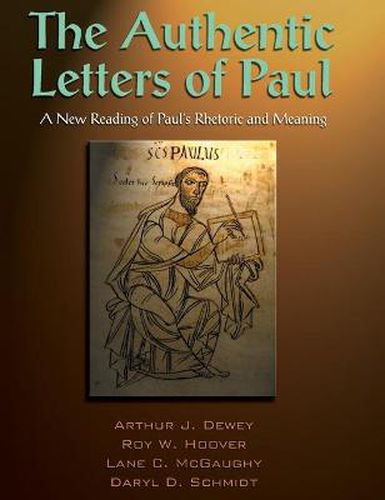Readings Newsletter
Become a Readings Member to make your shopping experience even easier.
Sign in or sign up for free!
You’re not far away from qualifying for FREE standard shipping within Australia
You’ve qualified for FREE standard shipping within Australia
The cart is loading…






This title is printed to order. This book may have been self-published. If so, we cannot guarantee the quality of the content. In the main most books will have gone through the editing process however some may not. We therefore suggest that you be aware of this before ordering this book. If in doubt check either the author or publisher’s details as we are unable to accept any returns unless they are faulty. Please contact us if you have any questions.
There were four different portraits of Paul in the early church: the non-authoritarian Paul of the great Letters, the authoritarian, misogynist Paul of the Pastoral Epistles, the frenetic missionary who single-handedly introduced Christianity to the Mediterranean world, and the proto- Gnostic Paul of Marcion and the Gnostic commentaries on Paul s letters. Which is the real Paul? The Christian church opted for the Pastoral Epistles, and so read Paul letters through that lens. But that image has become so problematic in the modern world that many contemporary readers are either put off by Paul or simply ignore him. But was Paul really such a frightful figure? In providing a fresh reading of Paul s authentic letters, the SV translators have attempted to liberate his words from those of Augustine, and later Martin Luther, who used Paul to cover their own guilty consciences. This Augustinian-Lutheran tradition of interpreting Paul s discourses about justification by faith as a way of dealing with their own sense of moral failure, for instance, represents but one way of translating Paul s letters. The Greek of Paul s writings can be understood rather differently so that Paul s message is not about personal guilt, but about the trustworthiness of God, and Jesus courageous faith in God as a role model for others. This is how Paul s letters are translated in this book. Here readers will encounter a very different view of Paul and his message.
$9.00 standard shipping within Australia
FREE standard shipping within Australia for orders over $100.00
Express & International shipping calculated at checkout
This title is printed to order. This book may have been self-published. If so, we cannot guarantee the quality of the content. In the main most books will have gone through the editing process however some may not. We therefore suggest that you be aware of this before ordering this book. If in doubt check either the author or publisher’s details as we are unable to accept any returns unless they are faulty. Please contact us if you have any questions.
There were four different portraits of Paul in the early church: the non-authoritarian Paul of the great Letters, the authoritarian, misogynist Paul of the Pastoral Epistles, the frenetic missionary who single-handedly introduced Christianity to the Mediterranean world, and the proto- Gnostic Paul of Marcion and the Gnostic commentaries on Paul s letters. Which is the real Paul? The Christian church opted for the Pastoral Epistles, and so read Paul letters through that lens. But that image has become so problematic in the modern world that many contemporary readers are either put off by Paul or simply ignore him. But was Paul really such a frightful figure? In providing a fresh reading of Paul s authentic letters, the SV translators have attempted to liberate his words from those of Augustine, and later Martin Luther, who used Paul to cover their own guilty consciences. This Augustinian-Lutheran tradition of interpreting Paul s discourses about justification by faith as a way of dealing with their own sense of moral failure, for instance, represents but one way of translating Paul s letters. The Greek of Paul s writings can be understood rather differently so that Paul s message is not about personal guilt, but about the trustworthiness of God, and Jesus courageous faith in God as a role model for others. This is how Paul s letters are translated in this book. Here readers will encounter a very different view of Paul and his message.